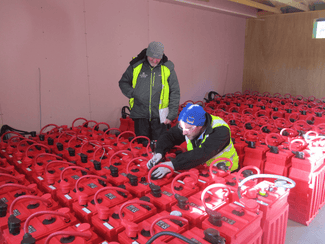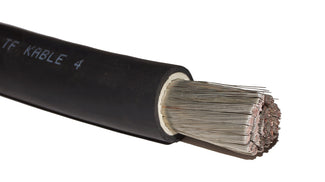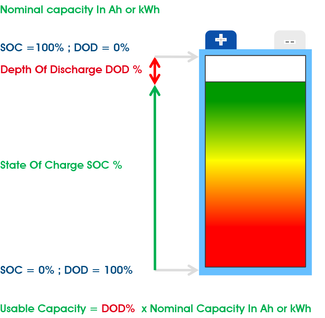Overcharging a battery raises the temperature of the electrolyte, causing excessive gassing, loss of distilled water and eventually damage to the plates. Consequently, use of a suitable charge regulator is necessary with any battery charging system to limit charging current as the battery voltage rises.
Excessive discharge of a battery can also lead to permanent damage. If a battery is close to its fully discharged state it should be recharged immediately (eg. by using a generator & charger) - or if that is not possible all loads switched off until the battery can be charged.
A system voltmeter is recommended and low voltage alarms and load disconnection devices are available.
Lithium Ion batteries require very precise regulation normally provided by a Battery Management System (BMS) with communication between the battery and whatever it is fitted to.
4 stage battery charging for lead acid batteries

- Bulk charging: Charger delivers constant current until a threshold voltage is reached
- Absorption stage: Charger keeps a constant voltage for a set period of time; or until the charge current needed to hold it at the float voltage has reduced to a set level
- Float stage: Charger maintains battery at the float voltage
- Some batteries also require a periodic equalisation charge. This is a controlled over-charge, where the charger holds the battery at a high voltage (high voltage, low current). Vented lead acid (VLA) batteries require a periodic equalisation to reduce sulphation of the electrodes and to de-stratify the electrolyte.


Battery Equalisation
Vented lead acid batteries need to be periodicallly boost charged and allowed to ‘gas’ freely in a process known as equalisation.
The battery banks consist of many individual battery cells connected in series which all behave slightly differently. Over time, this results in different charge levels in the individual cells. To correct this Equalisation or a “controlled overcharge” is required to bring each battery plate to a fully charged condition.
Regular equalisation charges will reduce stratification and sulfating, two circumstances that shorten lead acid battery life. Sulphation is caused by a battery being left in a discharged state for a period. Stratification is caused by low cycling allowing the battery electrolyte to settle into layers of different densities.
Equalisation of the battery bank is recommended every 60 to 180 days, depending on the usage of the individual system. How often batteries should have an equalisation charge will depend on several factors including depth of discharge, cycle frequency, operating temperature, charging voltage and current.
Equalisation time will vary depending on the level of sulfation, balance of charge, size of the battery bank and available charging source. If multiple parallel strings show charge imbalance it may be necessary to equalize each string individually.
It is recommended to water the battery cells half way through the equalisation. This will assure the water is mixed with the electrolyte. The water levels should also be checked when equalisation is completed and topped up as necessary.
During equalisation considerable quantities of gasses can be produced, so battery caps should be opened before the process is commenced, adequate ventilation provided to the battery location and extra care taken to avoid any sparks or naked flames.
Do not equalise sealed or gel-type batteries!
Please refer to the battery installation, operation and maintenance manuals for further information.




